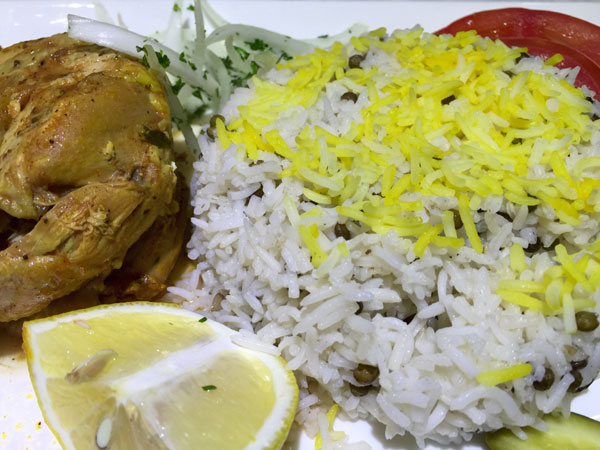Mad about saffron
 |
|
Iranian chefs at Persepolis restaurant in Beijing convert the precious red threads of saffron into golden rice.[Photo provided to China Daily] |
"Lower quality saffron will give you that prized color-that dark yellow ochre color," says Laura Kelley, author of the Silk Road Gourmet, "but it won't give you the aroma or the flavor." She notes that well before the Mongols of the Yuan Dynasty, "people were going all over the region, traveling and trading. The saffron story really is a Buddhist story: It probably came across to China via the Kashmir region. There is documentation of that traffic in Persia as old as the 16th century BCE, and in China there are distinct references from the herbalist Wan Zhen from about 300 BCE." Given the skew of time between such records, she adds, it's likely that there were multiple introductions of the spice into China.
Pleasant as saffron can be on the palate, it's far more than a foodstuff, says art dealer Hassan Rezaei, a friendly expat who has been selling Persian rugs in Beijing for about eight years.
Rezaei is quick to offer any guest some hot Persian tea-a mixture of saffron and black tea, but he's most eager to show saffron at work on his wall, in a magnificent Esfahan rug with sapphire-colored medallions that leap from a background of silken gold. The colors, he says with a big grin, come from natural dyes made from carefully gathered plants: saffron for the blaze of gold, and indigo for the rich blue.
Cookbook author Kelley is a career biologist whose lifelong fascination with food began in the kitchen of her Italian-American family. Her scientific training opened up entire worlds of non-culinary aspects of Silk Road foods, and her website at silkroadgourmet.com is a treasure trove of history, medicine, art and intriguing nuggets of lore as well as recipes.
















